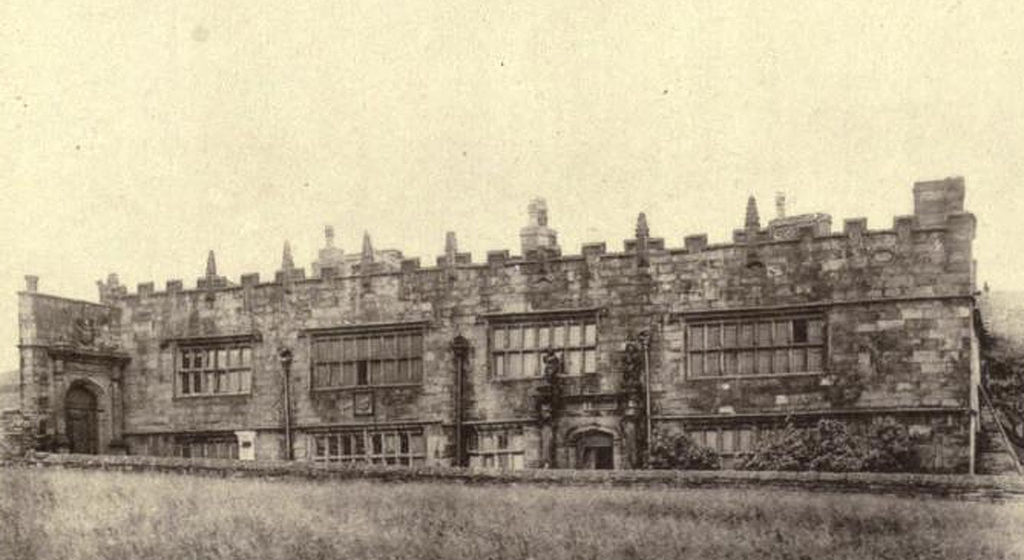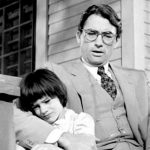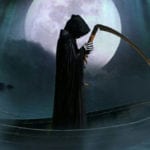 Technology
Technology  Technology
Technology  Humans
Humans 10 Everyday Human Behaviors That Are Actually Survival Instincts
 Animals
Animals 10 Animals That Humiliated and Harmed Historical Leaders
 History
History 10 Most Influential Protests in Modern History
 Creepy
Creepy 10 More Representations of Death from Myth, Legend, and Folktale
 Technology
Technology 10 Scientific Breakthroughs of 2025 That’ll Change Everything
 Our World
Our World 10 Ways Icelandic Culture Makes Other Countries Look Boring
 Misconceptions
Misconceptions 10 Common Misconceptions About the Victorian Era
 Mysteries
Mysteries 10 Strange Unexplained Mysteries of 2025
 Miscellaneous
Miscellaneous 10 of History’s Most Bell-Ringing Finishing Moves
 Technology
Technology Top 10 Everyday Tech Buzzwords That Hide a Darker Past
 Humans
Humans 10 Everyday Human Behaviors That Are Actually Survival Instincts
 Animals
Animals 10 Animals That Humiliated and Harmed Historical Leaders
Who's Behind Listverse?

Jamie Frater
Head Editor
Jamie founded Listverse due to an insatiable desire to share fascinating, obscure, and bizarre facts. He has been a guest speaker on numerous national radio and television stations and is a five time published author.
More About Us History
History 10 Most Influential Protests in Modern History
 Creepy
Creepy 10 More Representations of Death from Myth, Legend, and Folktale
 Technology
Technology 10 Scientific Breakthroughs of 2025 That’ll Change Everything
 Our World
Our World 10 Ways Icelandic Culture Makes Other Countries Look Boring
 Misconceptions
Misconceptions 10 Common Misconceptions About the Victorian Era
 Mysteries
Mysteries 10 Strange Unexplained Mysteries of 2025
 Miscellaneous
Miscellaneous 10 of History’s Most Bell-Ringing Finishing Moves
Top 10 Dark Inspirations for Great Britain’s Famous Writers
Monsters and witches, haunted mansions, and science experiments gone wrong—these were just a few of the bone-chilling subjects for some of Great Britain’s most famous authors, poets, and playwrights. But while these writers created characters and settings that could be unsettling, their source material was often even more disturbing. From grim folk tales to nightmares to drug-induced hallucinations, here are ten of the darkest inspirations for some of the greatest writers of Great Britain.
Related: 10 Absolutely Bizarre Books And Their Histories
10 Frankenstein
Mary Shelley had the idea for Frankenstein’s monster after taking opium and reading ghost stories with friends during a lightning storm.
Mary Wollstonecraft Godwin (later Mary Shelley) was just 18 years old when she joined writers Lord Byron, John Polidori, and her future husband, Percy Shelley, for a summer in Switzerland in 1816. Mary’s step sister, Clare Clairmont, was also present. When bad weather rolled in, the friends stayed in Byron’s rented villa, where they spent their nights drinking wine, taking opium, and reading ghost stories to each other. Clare Clairmont
One night, Byron suggested that each of them write a ghost story, and Mary took the challenge to heart. After several days of writer’s block, she lay in bed, unable to sleep, thinking back on some debates Byron and Shelley had had about whether electricity could be used to reanimate a corpse. Suddenly, she had a waking vision of what that might look like.
“I saw the hideous phantasm of a man stretched out, and then… show signs of life,” she later wrote. At first, she was horrified but quickly realized that “what terrified me will terrify others.” The next morning, she began to write the story that was published a year later as Frankenstein; or, The Modern Prometheus.[1]
9 Oliver Twist
Charles Dickens probably based the dreaded workhouse in Oliver Twist on a real location near his boyhood home.
In one of Charles Dickens’s most famous novels, young Oliver Twist—who lived a brutal existence in a London workhouse—approaches his cruel master after a meal and begs, “Please, sir, I want some more.” Many believe the scene’s grim setting was based on the Strand Union Workhouse, not far from where Dickens grew up.
Just 91.4 meters (100 yards) away from the Dickens’s home, the gloomy, high-walled brick building would definitely have made an impression. Residents at the workhouse labored all day in unhealthy and unsafe conditions in exchange for a little watery gruel (no second helpings allowed) and a living space half the size of a prison cell.
In case any of them decided to sneak a quick break, a stone carving over the building’s entrance reminded them to “avoid idleness and temperance.” The workhouse was built over a paupers’ graveyard, and over the past few years, thousands of bodies have been exhumed from the site.[2]
8 “The Levelled Churchyard”
Thomas Hardy wrote “The Levelled Churchyard” after helping to dig up a cemetery.
Years before he wrote Tess of the d’Urbervilles , British author Thomas Hardy worked as an architect. On one of his first jobs, he watched work crews dig up and rebury nearly 7,000 corpses from the graveyard at London’s St. Pancras Church to make way for a new railroad.
It was ghastly work. The digging was done at night, and many of the caskets came apart as they were lifted out of the ground. One coffin reportedly broke open to reveal one skeleton but two human skulls. As headstones were removed from the site, the young architect supposedly ordered many of them to be stacked around a young ash now famously known as the Hardy Tree.
Hardy’s experience stayed with him, and in his later years, he published a poem titled “The Levelled Churchyard.” The verses are written from the point of view of a group of corpses, which have been removed from their original resting places and buried in a mass grave: “We late-lamented, resting here, are mixed to human jam, and each to each exclaims in fear, ‘I know not which I am!’” [3]
7 Jane Eyre
Charlotte Bronte’s setting for Jane Eyre—and the madwoman in the attic—were based on a real place and its disturbing legend of a “Mad Mary.”
Charlotte Bronte pulled off the ultimate wedding-stopper in her classic novel Jane Eyre. As Jane is about to make her vows, she learns that her fiancé, Mr. Rochester, is already married—to a “madwoman” he has kept for years in a hidden attic at the top of a secret staircase in his bedroom.
Bronte is thought to have based Mr. Rochester’s stately but gloomy Thornfield Hall on Norton Conyers, a real-life estate in Yorkshire that she visited several years before publishing Jane Eyre. This visit is probably when Bronte first heard the legend of “Mad Mary,” a woman said to have been locked in the attic at Norton Conyers centuries ago.
In 2004, Norton Conyers’ current owners discovered a hidden staircase leading to the room where the real “Mad Mary” was said to have lived. Visitors to the home can now look up into this hair-raising attic entrance that almost certainly influenced Bronte as she developed the principal plot twist of her most famous novel.[4]
6 Dr. Jekyll and Mr. Hyde
The idea for Dr. Jekyll and Mr. Hyde came to Robert Louis Stevenson during a cocaine-induced nightmare.
In 1886, Robert Louis Stevenson was suffering from a bleeding lung and a sickness that was probably tuberculosis. Since this was the nineteenth century, his doctor prescribed cocaine, leaving the author in a restless, hallucinating state.
One night, tossing and turning in fitful sleep, he began to cry out. When his wife shook him awake, the Scottish writer is said to have asked her, “Why did you wake me? I was dreaming a fine bogey tale.” He spent the next three days furiously building around the scenes and characters he had seen in his nightmare, churning out a mind-blowing 10,000 words per day to tell the story of a respected doctor who lives a double life by transforming himself into an evil monster.
When his wife didn’t like the story (she supposedly burned the manuscript), Stevenson wrote another 30,000 words in three days to create a second and final draft, which became the huge success known today as the Strange Case of Dr. Jekyll and Mr. Hyde.[5]
5 The Dead Marshes
JRR Tolkien partially based the Dead Marshes in The Two Towers on a real battlefield he remembered from World War I.
In JRR Tolkien’s The Two Towers, the creature Gollum leads Frodo Baggins and Samwise Gamgee through the Dead Marshes on their way to destroy the One Ring in Mordor. Tolkien describes the marshes as “dreary and wearisome,” with rotting plant life and scum-covered waters filled with the bodies of men, elves, and orcs who died there in a battle long ago.
In a 1960 letter, Tolkien—a World War I veteran—wrote that the Dead Marshes were partially based on his memories of what northern France looked like after the Battle of the Somme, in which he fought as a young British officer. There were 1.5 million casualties during the battle, and months of rain and gunfire turned the area into “a nightmarish landscape of mud and corpses.”
Tolkien coped by creating the land of Middle-earth, jotting down stories by candlelight and sometimes even under shell fire. After spending months in the trenches, he became sick and was moved to a hospital to recover, never to return to the battlefield.[6]
4 Macbeth
William Shakespeare included witches in Macbeth to please a king who was obsessed with the occult.
It was not uncommon for people to believe in witchcraft in William Shakespeare’s time—and that included King James VI of Scotland. Believing witches had formed a conspiracy against him, James authorized witch hunts and ignited a Renaissance-era satanic panic that saw thousands of Scots, most of them women, executed for supposedly practicing black magic.
In 1603, James VI of Scotland became King James I of England and Ireland. Once in London, he became a patron of Shakespeare’s theater company. Eager to please his new king, the bard included the occult as a plot device in Macbeth, with three witches making a prophecy that inspires the title character and his wife to go on a gruesome killing spree.
After Macbeth’s debut, rumors spread that the play had been cursed by a real coven of witches. Cast and crew members had a number of accidents over the years, and even today, it is considered bad luck for an actor to say the name “Macbeth” in a theater outside of a live performance. Instead, it’s often simply called “The Scottish Play.” [7]
3 Lady Susan
Jane Austen may have based the main character in Lady Susan on a neighbor who beat, imprisoned, and starved her children.
In Lady Susan, Austen’s title character is a beautiful middle-aged widow who is both charming and manipulative. Lady Susan has no love for her shy and sensible daughter, Frederica, and is trying to marry her off to a wealthy man as soon as possible so she can find a husband of her own who is even richer.
Austen is thought to have based the character of Lady Susan on a Mrs. Craven, the grandmother of her childhood neighbors. In her day, this real-life woman was beautiful and charming in public but had a “tyrannical temper” in private, often beating and starving her children.
When she did give them food, it was usually something inedible, so the housemaids often snuck them bread and cheese. The children were prisoners in their own home, and several of her daughters eloped with strangers as a means of escape. Her last daughter, however, was able to marry well and went on to raise children of her own, who told stories about “the cruel Mrs. Craven” to their friend, Jane Austen.[8]
2 The Hound of the Baskervilles
Sir Arthur Conan Doyle’s The Hound of the Baskervilles is based on a real person whose story is shrouded in sinister legend.
The Hound of the Baskervilles follows detective Sherlock Holmes to Devonshire to investigate the mysterious death of Sir Charles Baskerville. The Baskerville family has been terrorized by a massive, demonic hound ever since the 1600s, after their ancestor Hugo Baskerville kidnapped a young woman and killed her on the moor surrounding the estate.
Doyle is said to have based the novel’s backstory on the legend of Squire Richard Cabell III, an actual person who —like Hugo Baskerville—lived in Devon in the seventeenth century. According to local legend, Cabell killed his own wife and sold his soul to the devil to avoid earthly punishment.
When he died and was buried in 1677, a pack of hellhounds is said to have come racing across the moor to howl at his tomb. For years afterward, the townspeople claimed that Cabell and his demon hounds could be found roaming the area on the anniversary of his death or lurking near the mausoleum that holds his remains to this day.[9]
1 Wuthering Heights

Emily Bronte may have drawn some of her inspiration for the Wuthering Heights estate from a dreary manor house on the hill above the school where she taught.
The second of the famed Bronte sisters, Emily Bronte, worked as a teacher and a governess before becoming a published author. Many believe that while teaching in West Yorkshire, she noticed High Sunderland Hall, a gloomy, Gothic-style manor that was decorated with elaborate and grotesque stonework.
The estate was also said to be haunted—by a hand. According to the story, one of its masters wrongly believed his wife had been unfaithful, so he cut off her hand in a fit of jealous rage—only to have it appear near a certain bedroom for years to come, trying the door and tapping on windows.
While there is room for debate, Bronte is widely thought to have been inspired by High Sunderland Hall as she created the main setting of her most famous novel. Her fictional Wuthering Heights estate was a wind-battered house with jutting stones, narrow windows, grotesque carvings, crumbling statues, and—of course—a ghost. But while Wuthering Heights was immortalized in Bronte’s story, High Sunderland Hall continued to deteriorate until it was finally demolished in 1951.[10]








